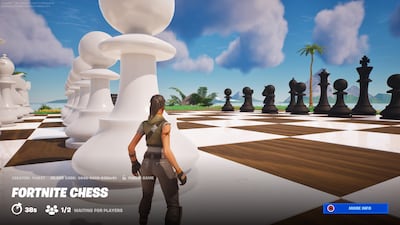Fortnite. A word that can strike fear in the hearts of parents. A word that causes many fights at bedtime. A word that’s very often misunderstood.
What if I told you that behind the zany guns and rocket launchers, past the purple llamas and dancing banana skins, that games such as Fortnite have the potential to be something good in your life?
What if a moderate amount of screentime could be, dare I say – educational?
You don’t believe me. I get it. For decades, video games have endured relentless stigma, seen by the masses as antisocial time sinks. At best, they’re tolerated for 30 minutes or so. At worst, they’re banned or taken away as a form of punishment.

But many fail to recognise that modern gaming, including those with guns, incorporates so much creativity, engineering, problem-solving, and collaboration that they can be an ally at home. A force for good. Time well spent instead of time wasted.
When I visited my nephew recently, the first thing he wanted to do was show off his Minecraft world. He took me on a virtual tour of his paradise of blocks, showing off with pride everything had recently made – a farmyard with barns and stables, a nearby treehouse perched on top of a hill, and a dock. All the while, he shared his plans to renovate the paddocks once he collected enough resources.
When night-time came into his world, the usual zombies came out to attack him. As he ran to the safety of the treehouse (complete with secret entrances, I might add), I looked at the screen in amazement at all the creativity and ingenuity on display. With his use of space, how he engineered each structure to stand tall, and how he conjured up an entire world from imagination using a Switch controller.
Video games such as Minecraft contain all the STEM-rich (science, technology, engineering, and mathematics) ingredients we often strive for in a classroom setting. And yet here they all are, disguised as play in the home, where a child may not even realise they’re learning.
Adults may not even realise it, either.

Passive learning is a byproduct of many modern games. Games such as Assassin’s Creed, known for their bloodthirsty gameplay, have dedicated Discovery Tours that take away any violence, allowing gamers a chance to explore Ancient Civilisations, such as Greece or Egypt, on their own private, interactive virtual tour.
Gaming apps now teach phonics and numeracy to infants. Adult language apps use games to practice phrases and vocabulary. Games released this year even teach you how to get a good night’s sleep.
Even Fortnite, in all its villainy, has a Creative Mode that, if you spent a few minutes sifting through, you would be surprised to find a plethora of minigames structured around learning. A quick Google search will reveal entire libraries of lesson plans and resources made by teachers on topics like coding your own board games like chess, creating music, designing environments, and more.
Gaming is one of the fast-growing industries worldwide, eclipsing the world of film, TV, and music combined. It’s only getting bigger. And it isn’t going anywhere. For that reason alone, building a healthy relationship around video games is worth your time and effort.

Research from the Entertainment Software Association helps document this growth each year. So far, in 2023, data states that over 212.6 million Americans play video games for at least one hour per week, with strong engagement across all ages, gender, and racial groups – 96 per cent of those surveyed saw games as beneficial, with 76 per cent of parents saying they played video games with their children. The search also found that the average age of gamers is slowly rising to 32.
As a 32-year-old myself, I have been an avid gamer for as long as I can remember. Some of my fondest memories from childhood are of rainy evenings at Granny’s, with several cousins all huddled around a prehistoric PlayStation 1, taking turns sending Crash Bandicoot to his demise. Of school days spent playing Carmen San Diego on a classroom computer, learning all the countries and continents. Of trading our prized Pokémon like a miniature stock exchange in the yard every Friday.
Even now, when I see a console, I see something entirely different from the average parent might. I see it more like an interactive bookcase, capable of opening portals to new worlds, new experiences, and new passions. The games children are playing now will undoubtedly form lifelong and treasured memories. And careers.
If the recently introduced digital games tax credit by the government is any indication, careers in the next five to 10 years will revolve around this growing sector, where everyone from developers and writers, artists and markets, content creators, and accountants can have a seat at the table.

Like all things in life, there should be a balance. And I’m not advocating for screen time to dominate a person’s life. Too much of anything is simply too much.
But what I am encouraging is seeing gaming from a different perspective, something other than a nuisance. Instead of a zero-hours approach, consider how screentime can be used constructively.
Sites like Common Sense Media allow parents to share their thoughts on video games, flag any topics that might need a discussion, and highlight any educational value. ESRB ratings can help you decide the suitability of games and apps, while all modern consoles have extensive controls that parents should feel empowered by, not helpless to.
Using these resources can inform your decision-making and de-escalate any conflict around gaming – because, as we know, there’s nothing more infuriating for a child to hear “because I said so.”
But my best advice? Grab a controller, sit down, and see what exactly the fuss is about. Help build a house in Minecraft. Drive a few laps in Mario Kart.
Dare I say it, suit up in Fortnite and see for yourself what can be done in a 30-minute slot.
You never know – you might learn something new.




